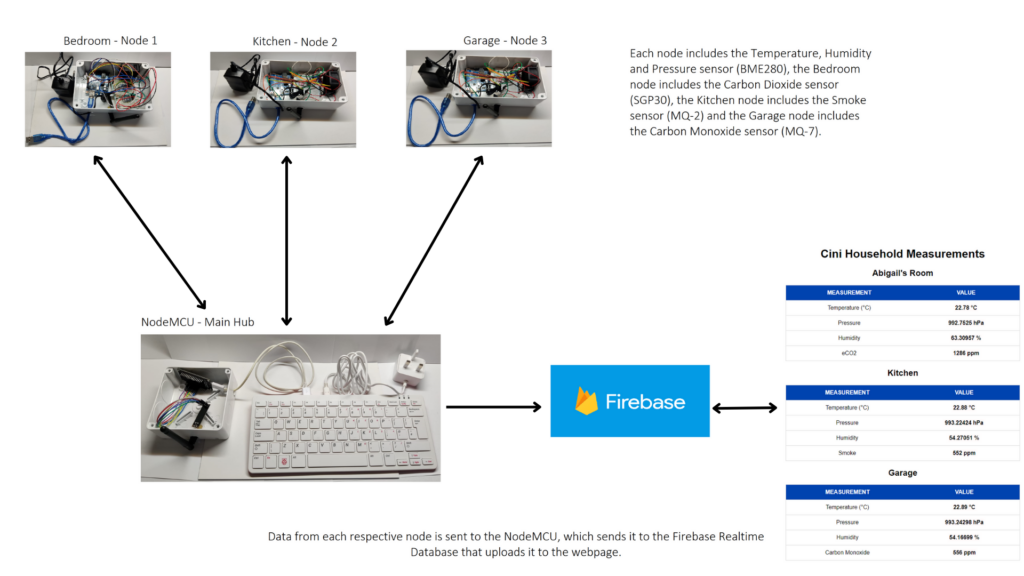The aim of this final year project was to develop a wireless sensor network that monitors the air quality in domestic households. Due to the Covid-19 pandemic, people have become more aware of the clean air around them as this can effectively reduce health hazards. The implemented system includes three separate nodes placed around selected areas of the house such as the garage, the kitchen, and a bedroom. These monitor specific gases, pressure, humidity, and temperatures. In order to display the data, a webpage was created which shows all the data collected from these nodes and presents it in the form of a table.
The Internet of Things (IoT) is a network of devices that feature hardware and software components that connect and exchange data with other devices and systems via the internet [1]. Collecting data through sensors is crucial to the development of IoT systems such as alarm systems, burglar alarms and air quality monitoring systems. Sensors are devices that detect physical data and produce signals and information that people and machines can understand and evaluate. From these sensors, data can be observed and analysed by the family and measures can be taken to improve air quality around specific areas around the home.
In this work, a wireless sensor network was built to monitor abnormalities in the air to reduce them. The communication backbone of this wireless sensor network is the nRF24L01+ transceiver module. The transceiver module is a low-power and long range (estimated to be around 1km) device. For two or more transceiver modules to communicate with each other, they need to be on the same channel. This channel can be any frequency in the 2,483.5 MHz Industrial, Scientific, and Medical (ISM) band. This system can have multiple slaves and masters, however, to communicate with each other, they need to have the same address and run data through a pipe.
A synchronous serial communication interface, known as the Serial Peripheral Interface (SPI), was used and this allows communication between the main hub and the sensory nodes implemented around the building. The NodeMCU with an onboard ESP-12F chip was used as a hub that communicates with a few sensor nodes around a domestic environment, where the data is collected and processed onto the webserver. The data sent by the sensory nodes will be uploaded and any inconsistencies received are noted and the user is informed about the certain inconsistency recorded. In order to create the hub, where everything can be monitored, a Raspberry Pi Personal Computer was used to make the system as portable and efficient as possible.
Each sensor node was designed around the Arduino UNO microcontroller and features several sensors, to collect data including temperature, pressure, humidity, Carbon Monoxide levels inside a garage and for the kitchen a smoke sensor which will include an alarm system in case any high levels are measured.

References/Biography
[1] Y. Ismail, “Internet of Things (IoT) Importance and Its Applications,” November 2019. [Online]. Available: https://www.intechopen.com/chapters/69788. [Accessed September 2021].
Student: Abigail Cini
Course: B.Sc. (Hons.) Computer Engineering
Supervisor: Dr Owen Casha
